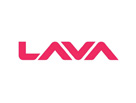This is perhaps an easier way to understand the gearing of a company and is generally common practice. A company may require a large amount of capital to finance major investments such as acquiring a competitor firm or purchasing the essential assets of a firm that is exiting the market. Such investments require urgent action and shareholders may not be in a position to raise the required capital, due to the time limitations. If the business is on good terms with its creditors, it may obtain large amounts of capital quickly as long as it meets the loan requirements.
The Gearing Ratio measures a company’s financial leverage stemming from its capital structure decisions. A gearing ratio is a useful measure for the financial institutions that issue loans, because it can be used as a guideline for risk. When an organisation has more debt, there is a higher risk of financial troubles and even bankruptcy.
Additionally, capital-intensive industries, such as manufacturing, typically finance expensive equipment with debt, which leads to higher gearing ratios. There are many types of gearing ratios, but a common one to use is the debt-to-equity ratio. To calculate it, you add up the long-term and short-term debt and divide it by the shareholder equity. If you don’t have any shareholders, then you (the owner) are the only shareholder, and the equity in this equation is yours.
- We’ll now move to a modeling exercise, which you can access by filling out the form below.
- Continue reading to learn about key features of gearing ratios and how they can support your decision-making.
- Amanda Bellucco-Chatham is an editor, writer, and fact-checker with years of experience researching personal finance topics.
- But as a one-time calculation, gearing ratios may not provide any real meaning.
Gearing Ratios: Definition, Types of Ratios, and How to Calculate
With this information, senior lenders might choose to remove short-term debt obligations when calculating the gearing ratio, as senior lenders receive priority in the event of a business’s bankruptcy. The gearing ratio calculated by dividing total debt by total capital (which equals total debt plus shareholders equity) is also called debt to capital ratio. Gearing is the amount of debt – in proportion to equity capital – that a company uses to fund its operations. A company that possesses a high gearing ratio shows a high debt to equity ratio, which potentially increases the risk of financial failure of the business. Monopolistic companies often also have a higher gearing ratio because their financial risk is mitigated by their strong industry position.
Why Are Gearing Ratios Important?
But if its main competitor shows a 70% gearing ratio, against an industry average of 80%, the company with a 60% ratio is, by comparison, performing optimally. It’s also important to remember that although high gearing ratio results indicate high financial leverage, they don’t always mean that a company is in financial distress. While firms with higher gearing ratios generally carry more risk, regulated entities such as utility companies commonly operate with higher debt levels. When gearing ratio is calculated by dividing total debt by total assets, it is also called debt to equity ratio.
This means that with the limited cash flows that the company is getting, it must meet its operational costs and make debt payments. A company may frequently experience a shortfall in cash flows and fail to pay equity shareholders and creditors. A gearing ratio is a measurement of a company’s financial leverage, or the amount of business funding that comes from borrowed methods (lenders) versus company owners (shareholders). Well-known gearing ratios include debt-to-equity, debt-to-capital and debt-service ratios. A higher gearing ratio indicates that a company has a higher degree of financial leverage. It’s more susceptible to downturns in the economy and the business cycle because companies that have higher leverage have higher amounts of debt compared to shareholders’ equity.
How Do You Calculate a Gearing Ratio?
In an economic downturn, such highly-levered companies typically face difficulties meeting their scheduled interest and debt repayment payments (and are at risk of bankruptcy). This ratio is expressed as a percentage, which reflects how much of a company’s existing equity would be required to pay off its debt. Gearing refers to the relationship, or ratio, of a company’s debt-to-equity (D/E).
You should consider whether you understand how this product works, and whether you can afford to take the high risk of losing your money. A company with a high gearing ratio will tend to use loans to pay for operational costs, which means that it could be exposed to increased risk during economic downturns or interest rate increases. Therefore, gearing ratios are not a comprehensive measure of a business’s health and are just a fraction of the full picture. Make sure to use gearing ratios as part of your fundamental analysis, but not as a standalone measure and always utilise the ratios on a case-by-case basis. The debt to equity ratio can be converted into a percentage by multiplying the fraction by 100.
IG International Limited receives services from other members of the IG Group including IG Markets Limited. Take your learning and productivity to the next level with our Premium Templates. Access and download collection of free Templates to help power your productivity and performance. Boost your confidence and master accounting skills effortlessly with CFI’s expert-led courses! Choose CFI for unparalleled industry expertise and hands-on learning that prepares you for real-world success.
A company’s financial leverage is its total assets divided by its shareholders’ equity. The result shows a comparison between total assets owned by the company versus shareholders’ ownership. A high ratio indicates that a good portion of the company’s assets are funded by debt.
The term refers to the relationship, or ratio, of a business’s debt-to-equity (D/E). Gearing shows the extent to which a firm’s operations retail method are funded by lenders vs. shareholders. The result indicates its financial leverage or how much of its operational debt is serviced via shareholders’ equity and/or borrowed funds.
For example, utility companies typically have a high, acceptable gearing ratio since the industry is regulated. These companies have a monopoly in their market, which makes their debt less risky companies in a competitive market with the same debt levels. A gearing ratio is a financial ratio that compares some form of capital or owner equity to funds borrowed by the company. As such, the gearing ratio is one of the most popular methods of evaluating a company’s financial fitness. This article tells you everything you need to know about these ratios, including the best one to use. The gearing ratio is often used interchangeably with the debt-to-equity (D/E) ratio, which measures the proportion what is the weighted average contribution margin in break of a company’s debt to its total equity.
For example, a gearing ratio of 70% shows that a company’s debt levels are 70% of its equity. The analysis of gearing ratios is a very important aspect of fundamental analysis. Perhaps the most common method to calculate the gearing ratio of a business is by using the debt to equity measure. The results of gearing ratio analysis can add value to a company’s financial planning when compared over time.








